The principle of industrial sand filter
A multi-media filter uses one or more filtering media to effectively remove suspended impurities from water and clarify it under a certain pressure by passing turbid water through a certain thickness of granular or non-granular materials. Common filter media include quartz sand, anthracite, manganese sand, etc. It is mainly used for pretreatment of water treatment, such as turbidity removal, water softening, and pretreatment of pure water. The effluent turbidity can reach below 3 degrees.
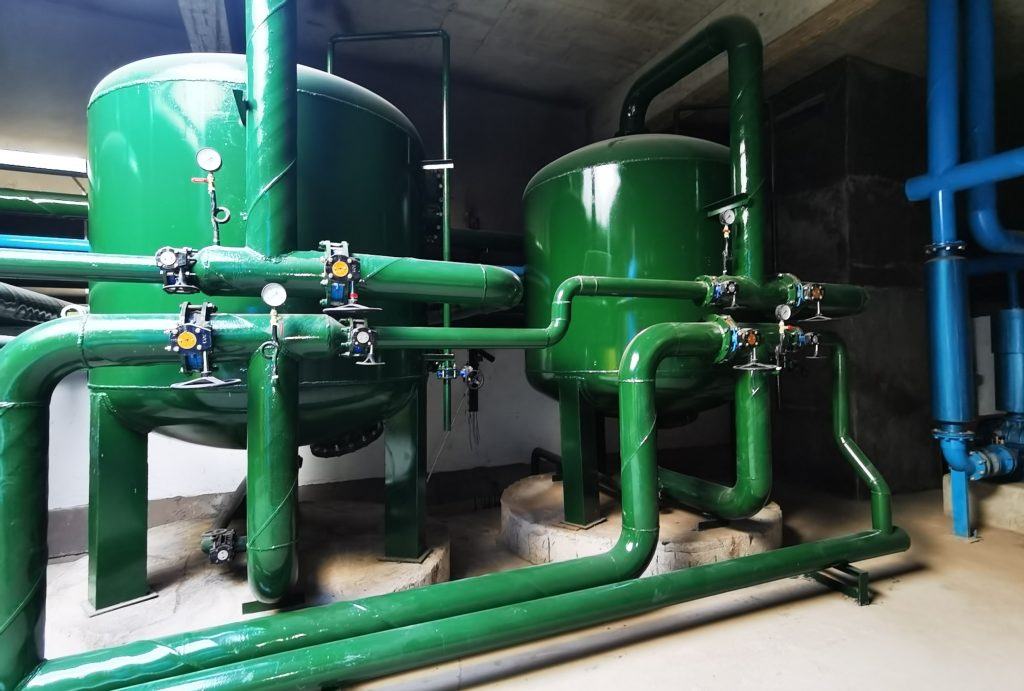
The meaning of filtration, in the process of water treatment, generally refers to the process of intercepting suspended impurities in water with filter media such as quartz sand and anthracite, to make the water clear. The porous material used for filtration is called filter media, and quartz sand is the most common type. Filter media can come in granular, powder, and fibrous forms. Commonly used filter media include quartz sand, anthracite, activated carbon, magnetite, tourmaline, ceramics, plastic balls, etc.
A multimedia filter (filter bed) is a type of filter that uses two or more media as the filter layer. In industrial circulating water treatment systems, it is used to remove impurities and adsorb oil from wastewater, so that the water quality meets the requirements for recycling. The main function of filtration is to remove suspended or colloidal impurities in the water, especially tiny particles and bacteria that cannot be removed by sedimentation technology. It also has a certain degree of removal effect on BODs and COD, etc.
一、Filter structure
The multimedia filter is mainly composed of a filter body, matching pipelines, and valves. The filter body mainly includes the following components: the body, water distribution system, support system, backwash air pipe, filter media, exhaust valve (external), etc.
二、The Selection Criteria of Filter Media
(1) The filter media must have sufficient mechanical strength to prevent rapid wear and breakage during backwashing process.
(2) The filter media should have good chemical stability.
(3) The filter media should not contain harmful or toxic substances to human health, or substances that are harmful to production or affect production.
(4) When selecting filter media, it is preferable to choose media with strong adsorption and pollutant removal abilities, high water production capacity, and good water quality.
In the filter media, gravel mainly plays a supporting role. In the filtration process, due to its high strength, stable spacing and gaps, and large pores, the filtered water can pass through smoothly during the forward wash process. Similarly, during backwashing, the backwash water and backwash air can pass through smoothly. In conventional configurations, gravel is divided into four sizes and is laid from bottom to top, with the larger sizes at the bottom.
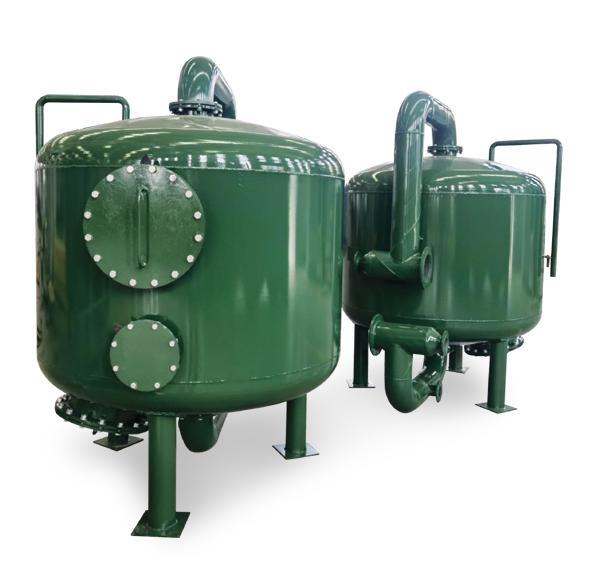
三、The Relationship between Particle Size of Filter Media and Bed Height
The ratio of the bed height to the average particle size of the filter media should be 800-1000 (design specification). The particle size of the filter media is related to the filtration accuracy.
四、Multi-media filters
Multi-media filters commonly used in water treatment include anthracite-quartz sand-magnetite filters, activated carbon-quartz sand-magnetite filters, activated carbon-quartz sand filters, and quartz sand-ceramic filters.
The design of multi-media filter layers mainly considers the following factors:
- Different filter media have significant density differences, so the layering structure should be maintained after backwashing.
- Select filter media according to the purpose of the produced water.
- The lower layer filter media should have a smaller particle size than the upper layer filter media to ensure the effectiveness and full utilization of the lower layer filter media.
In fact, for a three-layer filter bed, the upper layer filter media has the largest particle size, consisting of light-weight filter media with small densities, such as anthracite and activated carbon; the middle layer filter media has a medium particle size and density, generally consisting of quartz sand; and the lower layer filter media has the smallest particle size and highest density, consisting of heavy filter media such as magnetite. Due to density differences, the selection of filter media for a three-layer multi-media filter is basically fixed. The upper layer filter media performs coarse filtration, while the lower layer filter media performs fine filtration, thus fully utilizing the role of the multi-media filter bed, resulting in water of higher quality than that produced by a single-layer filter bed. For drinking water, the use of filter media such as anthracite and resin is generally prohibited.
五、Quartz sand filter
A quartz sand filter is a type of filter that uses quartz sand as its filter medium. It can effectively remove suspended solids from water and has a significant removal effect on pollutants such as colloids, iron, organic matter, pesticides, manganese, bacteria, and viruses in water.
Its advantages include low filtration resistance, large surface area, strong acid and alkali resistance, oxidation resistance, pH range of 2-13, and good resistance to pollution. The unique advantage of the quartz sand filter is that through the optimization of the filter medium and filter design, the filter can achieve adaptive operation. The filter medium has strong adaptability to the raw water concentration, operation conditions, pre-treatment processes, etc., which is conducive to ensuring the water quality under various operating conditions. During filtration, the filter bed automatically forms an upwardly sparse and downwardly dense state, which is conducive to ensuring the water quality. During backwashing, the filter medium is fully dispersed, and the cleaning effect is good.
Sand filters have the advantages of fast filtration speed, high filtration accuracy, and large pollutant holding capacity. They are widely used in various fields such as power, electronics, beverages, tap water, petroleum, chemical, metallurgy, textiles, papermaking, food, swimming pools, municipal engineering, etc., for pretreatment of process water, domestic water, circulating water, and wastewater.
The quartz sand filter equipment has a simple structure, can achieve automatic control during operation, has a large processing flow rate, requires fewer backwash times, has high filtration efficiency, low resistance, and is easy to operate and maintain.
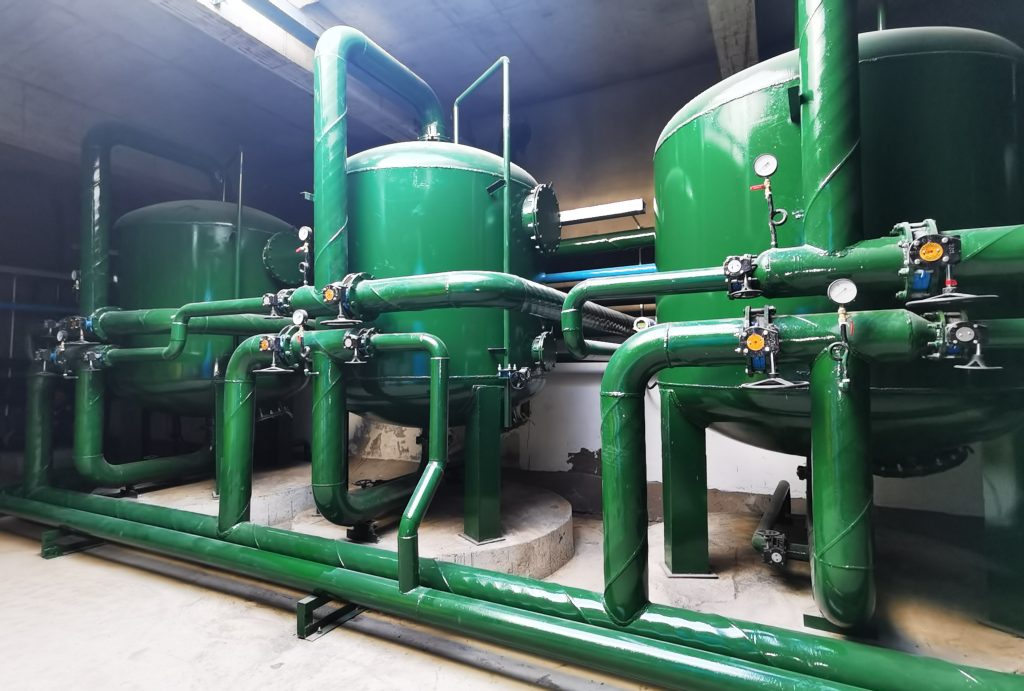
六、Activated carbon filter
The activated carbon filter uses activated carbon as its filter medium and is used to remove color, odor, residual chlorine, and organic matter. Its main function is adsorption, and activated carbon is an artificially made adsorbent.
Activated carbon filters are widely used in water pretreatment for household water and industries such as food, chemical, and power. Because activated carbon has a developed pore structure and a huge surface area, it has a strong adsorption capacity for dissolved organic matter in water, such as benzene and phenolic compounds. It also has a good removal effect on organic pollutants that are difficult to remove by biological and chemical methods, such as color, odor, surfactants, synthetic detergents, and dyes. Granular activated carbon has a removal rate of over 85% for ions such as Ag+, Cd2+, and CrO42-. After passing through an activated carbon bed, the suspended solids in the water are less than 0.1mg/L, the COD removal rate is generally 40% to 50%, and the free chlorine is less than 0.1mg/L.
七、Reverse flushing process
Reverse flushing of a filter mainly refers to the fact that after the filter is used for a certain period of time, a certain amount of impurities and dirt are intercepted and adsorbed by the filter material layer, which leads to a decrease in the water quality of the filtered water. The main indicators are: the deterioration of the water quality of the filtered water, an increase in the pressure difference between the inlet and outlet pipes, and a decrease in the flow rate of a single filter.
Principle of reverse flushing: Water flows through the filter material layer in the opposite direction, causing the filter layer to expand and suspend. With the shear force of the water flow and the collision and friction force of the particles, the filter material layer is cleaned to remove the dirt inside and discharged with the reverse flushing water.
八、Necessity of reverse flushing
(1) During the filtration process, suspended solids in the raw water are intercepted and adsorbed by the filter material layer and continuously accumulate in the filter material layer. As a result, the pores of the filter layer are gradually blocked by dirt, and a filter cake is formed on the surface of the filter layer, resulting in a continuous increase in the loss of filter head. When a certain limit is reached, the filter material needs to be cleaned to restore the working performance of the filter layer and continue working.
(2) During filtration, due to the increase of head loss, the shear force of the water flow on the dirt adsorbed on the surface of the filter material increases, and some particles are moved to the lower layer of the filter material under the impact of the water flow. Eventually, the suspended solids in the water will continuously increase and the water quality will deteriorate. When impurities pass through the filter layer, the filter will lose its filtering effect. Therefore, when a certain degree is reached, the filter material needs to be cleaned to restore the pollutant removal capacity of the filter layer.
- The suspended solids in sewage contain a large amount of organic matter. If they are trapped in the filter layer for a long time, bacteria and microorganisms will accumulate and breed in the filter layer, causing anaerobic decay. Therefore, it is necessary to clean the filter material regularly.
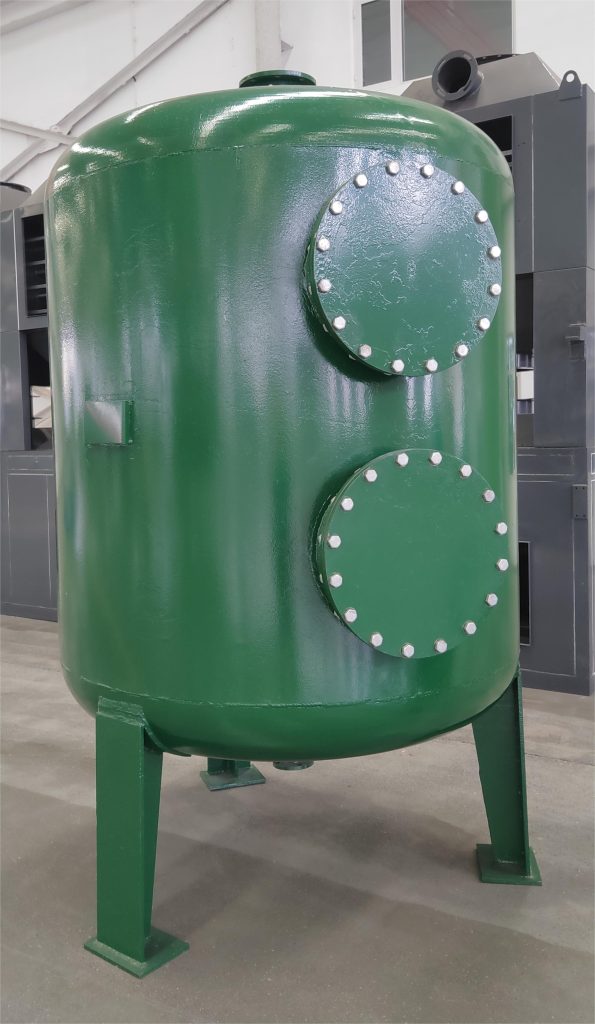
九、Backwashing Parameter Control and Determination
(1) Expansion Height: During backwashing, to ensure that there is enough space between filter particles for dirt to quickly flow out of the filter layer with water, the expansion rate of the filter layer should be higher. However, if the expansion rate is too high, the number of filter particles per unit volume decreases and the chance of particle collision decreases, making it unfavorable for cleaning. For a double-layer filter, the expansion rate should be between 40% and 50%. Note: In production and operation, the filling height and expansion height of the filter material should be randomly checked because during the normal backwashing process, some filter material may run off or wear out and needs to be replenished. A relatively stable filter layer has the following advantages: it ensures stable filtered water quality and guarantees the backwashing effect.
(2) Backwashing Water Volume and Pressure: The design generally requires a backwashing water intensity of 40 m3/(m2•h) and a backwashing water pressure of ≤0.15 MPa.
(3) Backwashing Air Volume and Pressure: The backwashing air intensity is 15 m/(m•h), and the backwashing air pressure is ≤0.15 MPa. Note: During the backwashing process, the injected backwashing air is collected at the top of the filter, and most of it should be discharged through the double-hole exhaust valve. In daily production, it is necessary to frequently check the smoothness of the exhaust valve, mainly manifested in the freedom of the valve ball lifting and lowering.
十、Gas-Water Combined Backwashing
(1) Air flushing first, then water backwashing: First lower the filter pool water level to 100 mm above the surface of the filter layer, and inject air for several minutes, and then use water to backwash. Suitable for filters with heavy surface pollution and light internal pollution.
Note: The corresponding valves must be closed in place; otherwise, when the water level drops below the surface of the filter layer, the upper part of the filter layer will not be immersed in water, and during the disturbance process of particles moving up and down, dirt cannot be effectively discharged and will move deeper into the filter layer.
(2) Combined air and water backwashing: Simultaneously inject air and backwashing water into the lower part of the static filter layer. As the air rises, it forms large bubbles in the sand layer and becomes small bubbles when it encounters the filter material, while also producing a scrubbing effect on the surface of the filter material. The backwashing water loosens the filter bed and suspends the filter material, making it easier for the air to scrub the filter material. The expansion effects of backwashing water and backwashing air are superimposed, making the combined effect stronger than a single effect.
Note: The backwashing pressure and intensity of water and air are different, and the order should be noted to avoid backwashing water entering the air pipeline.
(3) After the gas-water combined backwashing is completed, stop injecting air and keep the same flow rate of backwashing water, continue flushing for 3 to 5 minutes to remove the remaining bubbles in the filter bed.
Note: Pay attention to the status of the top double-hole exhaust valve.
十一、Analysis of the causes of filter media blockage:
(1) Pollutants trapped on the surface of the filter layer cannot be effectively removed within a certain period. During the subsequent backwashing process, if the distribution of backwash air is uneven, it will cause uneven expansion height. In areas with less agitation during backwashing, impurities such as oil and dirt on the surface of the filter media cannot be effectively removed. After the next normal filtration cycle is initiated, local loads will increase, and impurities will sink from the surface into the interior. As a result, the filter media will gradually form lumps, which will extend into the filling depth of the filter until the entire filter fails.
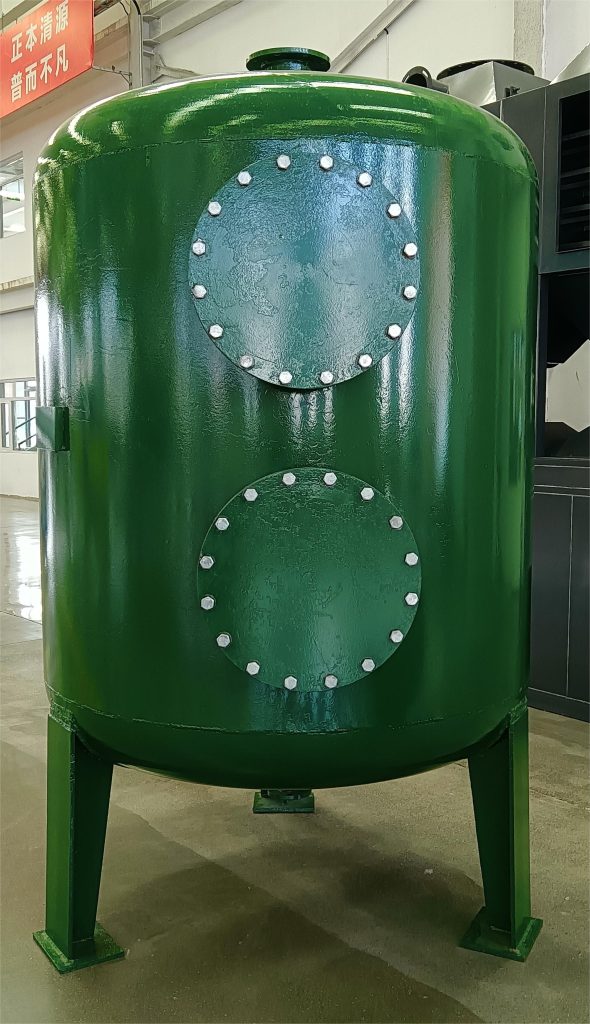
Note: In actual operation, uneven backwash air distribution often occurs, mainly due to perforation of the bottom aeration pipeline, local blockage or damage of the filter cap, or deformation of the grid tube spacing.
(2) The filter media particles on the surface of the filter layer are small, and they have fewer opportunities for collision during backwashing, resulting in less momentum and difficult cleaning. Attached sand particles can form small mud balls. When the backwashing is over and the filter layer is reclassified, the mud balls enter the lower filter media and continue to move deeper as they grow.
(3) Oil contained in the raw water is trapped in the filter, and the residual portion remains after backwashing, accumulating over time, which is the main factor causing blockage of the filter media. The timing of backwashing can be determined based on the water quality characteristics of the raw water and the water quality requirements of the effluent, using standards such as limited water head loss, effluent quality, or filtration time.
十二、Precautions for the filter manufacturing and acceptance process:
(1) The parallel deviation between the effluent tank and the filter plate should not exceed 2 mm.
(2) The horizontal and unevenness of the filter plate should both be less than ±1.5 mm. The structure of the filter plate should be made as a whole. When the diameter of the cylinder is large or constrained by raw materials and transportation, two sections can be spliced together.
(3) Reasonable treatment of the joints between the filter plate and the cylinder is especially important for the air backwashing process.
①To eliminate the radial gap between the filter plate and the cylinder caused by errors in filter plate processing and cylinder rolling, a circular arc ring plate is generally used for welding in sections. Full welding must be used at the contact area.
②The treatment method for the radial gap between the center pipeline and the filter plate is the same as above.
Note: The above measures ensure that filtration and backwashing can only communicate through the gap between the filter cap or discharge pipe. At the same time, it also ensures the uniform distribution of backwashing and filtration channels.
(4) The radial error of the through-hole processed on the filter plate is ±1.5 mm. Increasing the size of the fit between the filter cap guide rod and the filter plate through-hole is not conducive to the installation or fixation of the filter cap. Mechanical equipment must be used to process through-holes.
(5) Nylon is the best material for the filter cap, and ABS is second best. Due to the filter media added to the upper part, the filter cap is subjected to a large compression load, requiring high strength to avoid deformation. Elastic rubber pads must be added to the contact surface (upper and lower surfaces) between the filter cap and the filter plate.
